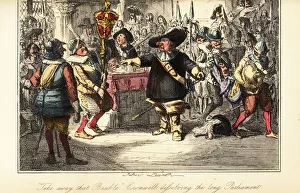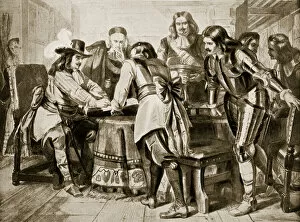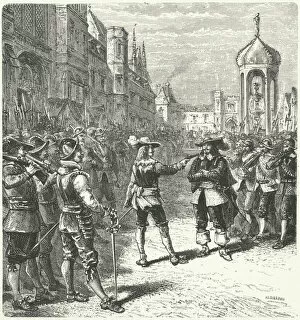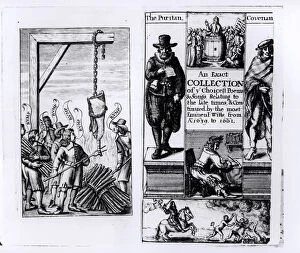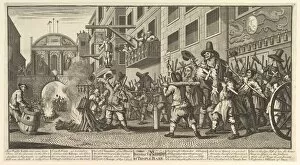Rump Parliament Collection
The "rump parliament" was a tumultuous period in English history, marked by political upheaval and power struggles
All Professionally Made to Order for Quick Shipping
The "rump parliament" was a tumultuous period in English history, marked by political upheaval and power struggles, and is depicted vividly in various engravings and illustrations from the time. One such engraving, titled "Burning ye Rumps at Temple-Barr, " captures the intense atmosphere of the era. The image showcases a fiery scene where rumps, symbolizing the remnants of Parliament's authority, are being burned at Temple Bar. This act represents the people's frustration with their ineffective government. Another significant moment portrayed is Oliver Cromwell removing the mace from the Commons Chamber and dissolving the Rump Parliament in 1653. This bold move demonstrated Cromwell's determination to assert his authority and reshape England's political landscape. In contrast to this dissolution, an illustration titled "General Monck declares for a free Parliament" depicts a pivotal event in 1660 when General George Monck declared his support for reinstating a democratic parliament. This decision paved the way for stability after years of turmoil. The struggle between Cromwell and Parliament is further highlighted in an engraving showing him dissolving both the Long Parliament and Charles I's trial on January 4th, 1649. These actions solidified Cromwell as a dominant force during this period of transition. Additionally, there are depictions of John Lambert preventing the Rump Parliament from sitting in 1659 and another illustration capturing Oliver Cromwell dissolving the Long Parliament once again. These images emphasize how fragile parliamentary institutions were during this time. Throughout these events, certain members deemed obnoxious to army interests were excluded from participating in House of Commons proceedings—a fact illustrated through an engraving aptly named "Exclusion of Members Obnoxious to Army. " Finally, we see scenes like that depicted on Cassells Illustrated History of England’s frontispiece or A. H Payne’s lithograph entitled "Take away that Bauble. " These portrayals capture moments of intense confrontation and defiance, showcasing the power struggles that defined this period.


